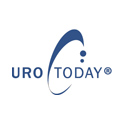BACKGROUND: The objective of this study was to explore the prognostic value of the Bone Scan Index (BSI) obtained at the time of diagnosis in a group of high-risk prostate cancer patients receiving primary hormonal therapy.
METHODS: This was a retrospective study based on 130 consecutive prostate cancer patients at high risk, based on clinical stage (T2c/T3/T4), Gleason score (8 to 10) and prostate-specific antigen (PSA) (> 20 ng/mL), who had undergone whole-body bone scans < 3 months after diagnosis and who received primary hormonal therapy. BSI was calculated using an automated method. Cox proportional-hazards regression models were used to investigate the association between clinical stage, Gleason score, PSA, BSI and survival. Discrimination between prognostic models was assessed using the concordance index (C-index).
RESULTS: In a multivariate analysis, Gleason score (p = 0.01) and BSI (p < 0.001) were associated with survival, but clinical stage (p = 0.29) and PSA (p = 0.57) were not prognostic. The C-index increased from 0.66 to 0.71 when adding BSI to a model including clinical stage, Gleason score and PSA. The 5-year probability of survival was 55% for patients without metastases, 42% for patients with BSI < 1, 31% for patients with BSI = 1 to 5, and 0% for patients with BSI > 5.
CONCLUSIONS: BSI can be used as a complement to PSA to risk-stratify high-risk prostate cancer patients at the time of diagnosis. This imaging biomarker, reflecting the extent of metastatic disease, can be of value both in clinical trials and in patient management when deciding on treatment.
Written by:
Kaboteh R, Damber JE, Gjertsson P, Höglund P, Lomsky M, Ohlsson M, Edenbrandt L. Are you the author?
Department of Molecular and Clinical Medicine, Clinical Physiology, Sahlgrenska University Hospital, Sahlgrenska Academy at the University of Gothenburg, Gothenburg, 413 45, Sweden.
Reference: EJNMMI Res. 2013 Feb 6;3(1):9.
doi: 10.1186/2191-219X-3-9
PubMed Abstract
PMID: 23384286



